I'm using a Delaunay triangulation to interpolate in some function values evaluated at a set of parameters on a regular 4-dimensional grid. Sometimes, when a parameter value changes by a small amount that takes it to a new simplex, more than one point in the simplex changes. I expect that as I vary one of the parameter continuously, I'd move from simplex to simplex by changing just one point in the simplex at a time (and that's usually the case in my code, too). Instead, consider this script:
import numpy as np
from scipy.spatial import Delaunay
# hideous construction to get the desired 4d grid of points
# with points at [-1, -0.5, 0, 0.5, 1] along each axis
X = np.vstack(list(map(np.ravel, np.meshgrid(*[np.linspace(-1, 1, 5) for i in range(4)])))).T
tri = Delaunay(X)
delta = 1e-10
print(np.sort(tri.vertices[tri.find_simplex([-0.25, -0.05, 0.5+delta, 0.1])]))
print(np.sort(tri.vertices[tri.find_simplex([-0.25, -0.05, 0.5-delta, 0.1])]))
which produces
[192 292 317 318 322]
[167 292 293 313 317]
Note that these two simplices differ by 3 points, where I expect one, and I haven't devised a 2- or 3-D example where more than one vertex would change.
I'm 99% sure this is because my points are on a regular grid but I can't find a detailed answer of why or how to avoid the problem. I know that the triangulation isn't unique but that isn't fundamentally a problem. Various tricks appear to change where I encounter this issue but I haven't yet found a "fix" that prevents the issue from appearing anywhere.
Edit
I've managed to find an example in 3D, which allows me to visualise the problem.
import numpy as np
from scipy.spatial import Delaunay
X = np.vstack(list(map(np.ravel, np.meshgrid(*[np.linspace(-1, 1, 5) for i in range(3)])))).T
tri = Delaunay(X)
delta = 1e-6
x = np.array([-0.25, 0, 0.07])
fig = pl.figure()
ax = fig.add_subplot(projection='3d')
ax.scatter(*x, c='k')
x[1] = delta
s = X[tri.vertices[tri.find_simplex(x)]]
for i, si in enumerate(s):
for j, sj in enumerate(s[i:]):
ax.plot3D(*np.vstack([si, sj]).T, c='C0')
x[1] = -delta
s = X[tri.vertices[tri.find_simplex(x)]]
for i, si in enumerate(s):
for j, sj in enumerate(s[i:]):
ax.plot3D(*np.vstack([si, sj]).T, c='C1')
ax.set_xlabel('$x$')
ax.set_ylabel('$y$')
ax.set_zlabel('$z$')
and here are two aspects on the output.
The blue and orange simplices are contain the interpolation point before and after it crosses y=0 (from positive to negative). My assumption was that both simplices would have the same triangular face along the y=0 plane but apparently this is incorrect. Is this fundamental to the Delaunay triangulation in this degenerate case or something about the implementation? And is there a way to avoid it? The QHull option Qx (which is in SciPy's default options for D>4) seems to help for this example but I'm not sure about globally.

